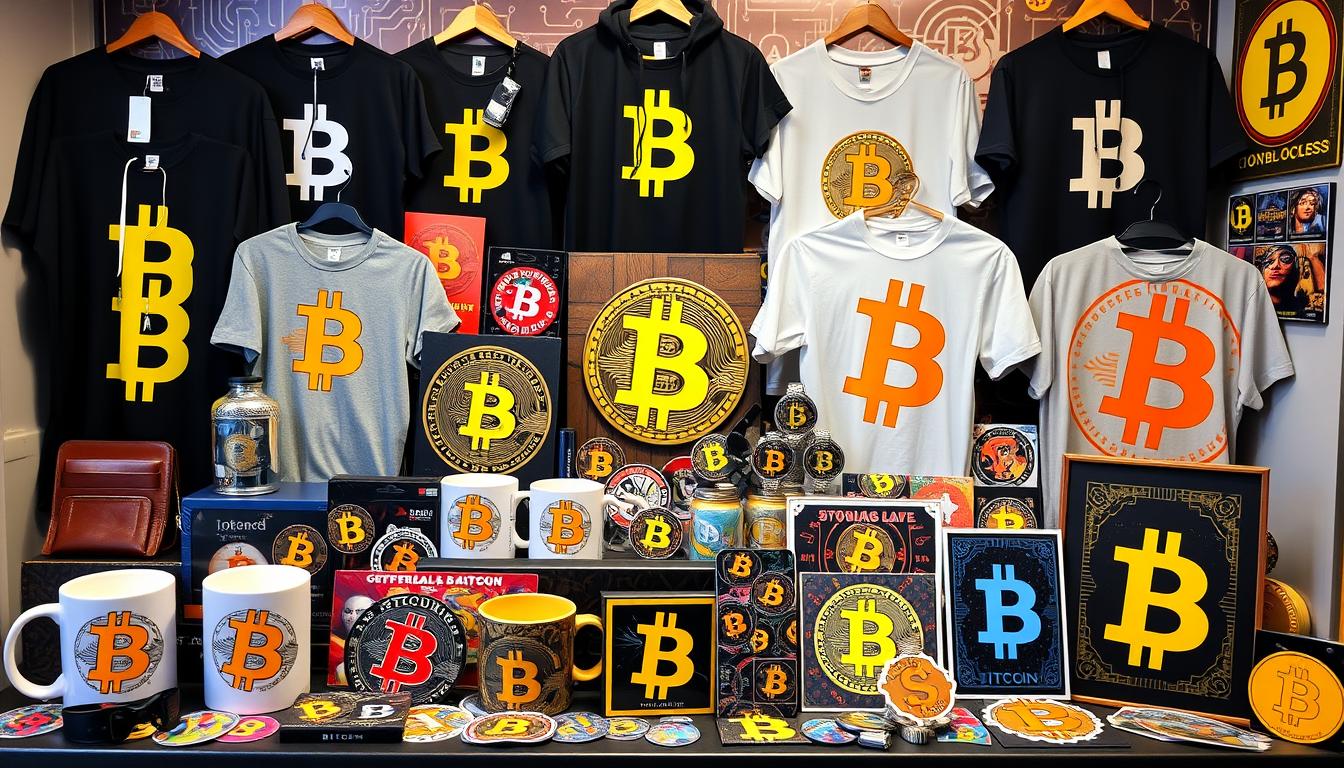Now Reading: Tokenized Music and Media Streaming: A New Era
- 01
Tokenized Music and Media Streaming: A New Era
Tokenized Music and Media Streaming: A New Era

In the rapidly evolving digital landscape, the intersection of blockchain technology and the music industry is ushering in a transformative era of tokenized music and media streaming. This revolutionary shift is poised to reshape the way artists connect with their fans, monetize their content, and fundamentally redefine the music distribution ecosystem.
Blockchain-based platforms are pioneering innovative models that empower artists to take control of their digital assets, offering unprecedented transparency, royalty management, and direct fan engagement. By tokenizing music and media content, these platforms are creating new avenues for fans to actively participate in the success of their favorite artists, blurring the lines between creators and consumers in the Web3 media ecosystems.
As the industry embraces this transformative shift, the potential for blockchain-based streaming to revolutionize the music and media landscape is becoming increasingly apparent. From enhanced revenue opportunities for artists to the democratization of content distribution, the tokenization of music and media promises to usher in a new era of creative empowerment and audience engagement.
Key Takeaways
- Blockchain technology is transforming the music and media industry, enabling new models of tokenized content distribution and ownership.
- Tokenized music and media streaming platforms are empowering artists to take control of their digital assets and connect directly with their fans.
- The convergence of blockchain, tokenomics, and media streaming is creating innovative revenue streams and enhancing the artist-fan relationship.
- Decentralized platforms are disrupting traditional music distribution channels, offering greater transparency and equitable royalty distributions.
- Tokenized ownership models are introducing new opportunities for fans to actively participate in the success of their favorite artists and content.
Introduction to Tokenized Music and Media Streaming
In the ever-evolving digital landscape, a new paradigm is emerging that promises to transform the way we consume and interact with music and media. The concept of tokenization, the process of converting assets into digital tokens, has found its way into the realm of music streaming, creating a unique intersection between emerging blockchain technology and traditional media platforms.
Definition of Tokenization
Tokenization is the process of converting assets, whether physical or digital, into unique digital representations called tokens. In the context of music and media, tokenization allows for the creation of decentralized digital media ownership, where fans and artists can directly engage with and trade digital assets, such as Music NFTs, on Decentralized Media Platforms.
Overview of Media Streaming
The traditional media streaming model has been dominated by centralized platforms, where content creators often struggle to retain control and equitable revenue distribution. Digital Media Ownership has been a longstanding challenge, with users essentially renting access to content rather than owning it outright.
The Intersection of Tokenization and Streaming
The integration of tokenization and media streaming is poised to disrupt the industry, ushering in a new era of Decentralized Media Platforms that empower artists and fans alike. By leveraging blockchain technology, tokenized music and media streaming platforms can offer greater transparency, ownership rights, and revenue opportunities for content creators, while providing users with a more engaging and rewarding experience.
The convergence of these technologies holds the potential to reshape the music and media landscape, offering a more equitable and decentralized future for all stakeholders involved.
Benefits of Tokenized Music for Artists
The advent of tokenized music and NFT Music Marketplaces has opened up a world of new opportunities for artists. By harnessing the power of blockchain technology, artists can now enjoy greater revenue opportunities, enhanced control over their Tokenized Royalties, and direct engagement with their devoted fan base.
Greater Revenue Opportunities
Tokenization enables artists to create and sell digital assets, such as unique music tracks, artwork, or even fractional ownership of their work. This provides a new revenue stream, allowing artists to monetize their creations in innovative ways and potentially earn a larger share of the proceeds compared to traditional music distribution models.
Enhanced Control Over Royalties
With tokenized music, artists can exercise more control over the distribution and management of their royalties. Smart contracts can automatically and transparently track and distribute royalty payments, ensuring that artists receive their fair share in a timely manner. This increased transparency and efficiency can lead to a more equitable music industry ecosystem.
Direct Fan Engagement
Tokenization enables artists to build deeper connections with their fans. By offering exclusive digital content, limited-edition collectibles, or even the ability to directly invest in an artist’s work, fans can become active participants in the artist’s journey. This fosters a sense of community and ownership, creating a stronger bond between the artist and their supporters.
The rise of Tokenized Royalties and NFT Music Marketplaces has the potential to transform the music industry, empowering artists to take greater control of their careers and forge stronger relationships with their fans. As the technology continues to evolve, we can expect to see even more innovative ways for artists to thrive in this new era of music distribution and monetization.
How Tokenomics Works in Music Streaming
The convergence of tokenization and music streaming has ushered in a new era of Tokenized Content Distribution and Blockchain-based Streaming. At the heart of this transformative shift lies the concept of tokenomics – the economic principles that govern the creation, distribution, and utilization of tokens within a decentralized ecosystem.
Explanation of Tokenomics
Tokenomics is the study of how tokens are designed, distributed, and used within a blockchain-based platform. In the context of music streaming, tokenomics encompasses the mechanisms that determine the value, supply, and demand of the platform’s native token. This token serves as the medium of exchange, enabling seamless transactions and the distribution of royalties to artists and rights holders.
The Role of Smart Contracts
The integration of smart contracts, which are self-executing digital agreements, plays a crucial role in the tokenized music streaming ecosystem. These smart contracts automate the distribution of royalties, ensuring transparency and fairness in the payment process. By encoding the terms of licensing agreements and royalty splits into the smart contract, the platform can effectively manage the flow of royalties from streaming activity to the rightful recipients.
Incentives for Users
Tokenized music streaming platforms leverage various incentive mechanisms to encourage user participation and platform growth. These incentives may include token rewards for activities such as listening to music, curating playlists, or engaging with the community. By aligning user interests with the platform’s success, these incentives foster a vibrant and sustainable ecosystem where both artists and fans benefit from the Tokenized Content Distribution and Blockchain-based Streaming model.
| Incentive Mechanism | Description |
|---|---|
| Listening Rewards | Users earn platform tokens for actively listening to music on the platform. |
| Curation Rewards | Users are rewarded for creating and sharing playlists, which can drive discovery and engagement. |
| Community Participation | Tokens are awarded for engaging with the platform’s community, such as leaving reviews, sharing content, or participating in discussions. |
By understanding the intricacies of tokenomics, music streaming platforms can harness the power of Tokenized Content Distribution and Blockchain-based Streaming to create a more equitable, transparent, and user-centric music ecosystem.

Blockchain Technology and Music Distribution
In the ever-evolving world of music streaming and distribution, blockchain technology has emerged as a game-changer. By leveraging the power of decentralized networks, blockchain-based platforms are transforming the way music is discovered, shared, and monetized, paving the way for a new era of Decentralized Media Platforms and Web3 Media Ecosystems.
Understanding Blockchain Basics
At its core, blockchain is a distributed ledger technology that enables secure, transparent, and tamper-resistant record-keeping. In the context of music distribution, blockchain-powered platforms can facilitate direct interactions between artists and fans, eliminating the need for intermediaries and ensuring fair compensation for creators.
The Impact of Decentralization
The decentralized nature of blockchain technology has significant implications for the music industry. By removing centralized gatekeepers, artists can gain greater control over the distribution and monetization of their work, leading to increased revenue opportunities and enhanced fan engagement. This shift empowers musicians to build direct relationships with their audience and explore new revenue streams, such as tokenized fan experiences and royalty-based smart contracts.
Case Studies in Music Blockchain Use
Several pioneering projects have already demonstrated the potential of blockchain technology in the music industry. Audius, a decentralized music-sharing platform, allows artists to upload their content and earn rewards directly from fans, while Myco explores the intersection of blockchain, non-fungible tokens (NFTs), and music to create new avenues for artist-fan interactions. These innovative use cases highlight the transformative power of blockchain in Decentralized Media Platforms and the emergence of Web3 Media Ecosystems.
“Blockchain technology has the potential to revolutionize the music industry by empowering artists and fostering a more equitable, transparent, and decentralized ecosystem.”
Leading Platforms in Tokenized Music Streaming
The rise of Tokenized Music and Media Streaming has revolutionized the way artists and fans engage with music. At the forefront of this digital transformation are several leading platforms that are shaping the future of the industry. From decentralized music sharing to innovative business models, these platforms are redefining the music ecosystem.
Audius: Democratizing Music
Audius, a blockchain-based music-sharing platform, is at the forefront of the tokenized music revolution. Offering a decentralized and transparent infrastructure, Audius empowers artists to maintain full control over their content and. By leveraging the power of blockchain technology, Audius provides a platform for direct-to-fan engagement, enabling artists to connect with their audience like never before.
Myco: A New Paradigm
Myco, a unique NFT Music Marketplace, is pioneering a new paradigm in tokenized music. This platform allows artists to monetize their creations through the sale of non-fungible tokens (NFTs), offering fans a chance to own a piece of their favorite music. By tapping into the growing demand for digital collectibles, Myco is transforming the way artists and fans interact, creating a more equitable and transparent music ecosystem.
Spotify and Blockchain Integration
Even industry giants like Spotify are exploring the potential of blockchain technology in the tokenized music landscape. The company has been actively exploring ways to integrate blockchain-based solutions into its existing infrastructure, aiming to provide artists with greater control over their content and royalties. As the music industry continues to evolve, the integration of Tokenized Music and Media Streaming with established platforms like Spotify could pave the way for a more inclusive and empowered future for artists and fans alike.
| Platform | Key Features | Unique Selling Point |
|---|---|---|
| Audius |
| Empowering artists through blockchain technology |
| Myco |
| Transforming the music industry through NFTs |
| Spotify |
| Bridging traditional music streaming with blockchain |
“The integration of Tokenized Music and Media Streaming with established platforms like Spotify could pave the way for a more inclusive and empowered future for artists and fans alike.”
Tokenized Ownership Models Explained
In the emerging world of digital media, tokenization is revolutionizing the way we think about ownership and investment. When it comes to music, tokenized ownership models are creating new opportunities for both artists and fans alike. Let’s explore the concept of full ownership and fractional ownership, and unpack the potential benefits and risks for investors.
Full Ownership vs. Fractional Ownership
Traditional music ownership typically involved a binary choice: you either owned the rights to a song or album, or you didn’t. However, tokenization is introducing a more nuanced approach. Full ownership means an investor has purchased the exclusive rights to a specific music asset, granting them complete control and the ability to monetize it as they see fit. In contrast, fractional ownership allows multiple investors to collectively own a portion of a music asset, each with a stake in the potential returns.
Benefits for Investors
- Diversification: Fractional ownership enables investors to spread their risk across a portfolio of music assets, rather than being tied to a single investment.
- Accessibility: Tokenized ownership lowers the barrier to entry, allowing a wider range of investors to participate in the music industry’s potential upside.
- Liquidity: Tokenized assets can be more easily traded or sold on secondary markets, providing investors with greater flexibility.
Risks and Considerations
While the potential rewards of tokenized music ownership are enticing, it’s essential to consider the associated risks. Volatile cryptocurrency markets, regulatory uncertainty, and the challenge of accurately valuing music assets can all pose challenges for investors. Additionally, the long-term sustainability of tokenized music ecosystems remains to be seen, as the industry navigates the transition from traditional to decentralized models.
As the Digital Media Ownership and Music NFTs landscapes continue to evolve, investors must carefully weigh the benefits and risks to make informed decisions that align with their financial goals and risk tolerance.

The Role of Non-Fungible Tokens (NFTs)
In the rapidly evolving landscape of music streaming and digital media, Non-Fungible Tokens (NFTs) have emerged as a game-changing force. These unique digital assets are revolutionizing the way music is owned, distributed, and experienced by both artists and fans.
NFTs in Music: A Transformative Shift
NFTs have the power to redefine the concept of digital media ownership. By leveraging blockchain technology, NFTs allow musicians to create and sell unique digital artworks, audio recordings, and other interactive experiences that fans can truly own and collect. This shift towards Music NFTs and Digital Media Ownership is empowering artists to connect with their audience in new and innovative ways.
Examples of Successful Music NFTs
- The electronic music duo The Chainsmokers made waves by selling an NFT that granted the buyer a percentage of the song’s royalties.
- King of Leon became the first major band to release an album as an NFT, offering exclusive digital artwork and special perks for fans.
- Grimes, the renowned Canadian musician, has successfully auctioned off a series of her digital artworks as NFTs, generating millions of dollars in revenue.
Market Trends and Predictions
The adoption of NFTs in the music industry is steadily growing, with market analysts predicting a continued surge in the coming years. As more artists and fans embrace the potential of Music NFTs and Digital Media Ownership, the industry is poised to witness a transformation in the way music is created, distributed, and consumed.
The rise of NFTs in music is not without its challenges, however. Navigating the complex legal and regulatory landscape, ensuring artist and fan protections, and addressing concerns around sustainability and environmental impact will be crucial as the industry continues to evolve. Nevertheless, the possibilities offered by NFTs in the music realm are undeniably exciting, paving the way for a new era of digital media ownership and artistic expression.
Legal Implications of Tokenized Music
As the music industry embraces the innovative world of tokenized music and blockchain-based streaming, it is crucial to navigate the complex legal landscape that accompanies this transformation. From navigating copyright issues to understanding the evolving regulations surrounding crypto assets, the future of music rights is a vital consideration for artists, fans, and industry stakeholders alike.
Copyright Issues in Tokenization
The introduction of tokenized music royalties has raised several questions regarding copyright ownership and distribution. Artists and content creators must carefully consider how to protect their intellectual property rights when their work is represented as tokenized assets. Ensuring transparent and equitable royalty distribution through smart contracts and decentralized platforms is a key priority in this evolving ecosystem.
Regulation of Crypto Assets
The growing prominence of Tokenized Royalties and Blockchain-based Streaming has also brought increased scrutiny from regulatory bodies. Navigating the regulatory landscape for crypto assets in the music industry is crucial, as policymakers work to strike a balance between fostering innovation and protecting consumer interests. Artists and platforms must stay informed on the latest developments to ensure their tokenized offerings comply with evolving rules and guidelines.
Future of Music Rights
As the music industry continues to embrace tokenization and blockchain technology, the future of music rights is poised for significant transformation. Experts predict a shift towards more equitable and transparent models of royalty distribution, empowering artists to retain greater control over their creative works. The integration of non-fungible tokens (NFTs) and decentralized ownership structures could further redefine the way music rights are managed and transferred in the years to come.
“The transition to tokenized music royalties represents an opportunity to address long-standing issues in the industry, ultimately benefiting both artists and fans.”
As the music industry navigates the legal complexities of tokenized music, stakeholders must remain vigilant in protecting artists’ rights, adapting to evolving regulations, and embracing the transformative potential of this technological revolution.
User Experience in Tokenized Streaming
As the Web3 media ecosystems and tokenized content distribution models continue to evolve, the user experience in these emerging music streaming platforms is becoming increasingly important. Navigating these new platforms, understanding payment options and token transactions, and enhancing user engagement are key factors that will shape the adoption and success of tokenized music streaming.
Navigating New Platforms
The transition to tokenized music streaming platforms can present challenges for users who are accustomed to traditional streaming services. These new platforms often require users to familiarize themselves with blockchain-based technologies, cryptocurrency wallets, and decentralized applications (dApps). Intuitive user interfaces, clear onboarding processes, and educational resources can help users seamlessly adapt to the tokenized streaming experience.
Payment Options and Token Transactions
Tokenized music streaming platforms offer a variety of payment options, including the use of cryptocurrencies, native platform tokens, or fiat currency. Users must understand how to acquire, manage, and utilize these tokens for seamless transactions and access to content. Transparent fee structures, secure payment gateways, and user-friendly token management features can enhance the overall payment experience.
Enhancing User Engagement
Tokenized streaming platforms have the potential to foster deeper connections between artists and their fans. By enabling direct fan engagement, micropayments, and tokenized ownership models, these platforms can create a more immersive and rewarding experience for users. Strategies such as fan-driven curation, interactive content, and loyalty-based incentives can help enhance user engagement and foster a thriving tokenized music ecosystem.
| Feature | Traditional Streaming | Tokenized Streaming |
|---|---|---|
| Payment Options | Primarily fiat currency | Cryptocurrencies, native tokens, and fiat currency |
| User Engagement | Limited direct interaction with artists | Enhanced fan-artist engagement, micropayments, and tokenized ownership |
| Content Curation | Algorithm-driven recommendations | User-driven curation and community-based content discovery |
As the Web3 media ecosystems and tokenized content distribution models continue to gain traction, the user experience in these emerging music streaming platforms will be a critical factor in driving adoption and fostering a thriving tokenized music ecosystem.

Case Studies: Successful Tokenized Music Projects
As the music industry embraces the power of tokenization, several artists have pioneered groundbreaking initiatives that showcase the transformative potential of Music NFTs and Tokenized Music and Media Streaming. Let’s explore some noteworthy case studies and unpack the lessons learned from these trailblazing projects.
Notable Artists Leveraging Tokenization
One standout example is the electronic music duo, The Chainsmokers, who have leveraged tokenization to engage their fan base in novel ways. In 2021, they launched a collection of unique Music NFTs, offering their fans exclusive access to behind-the-scenes content, limited-edition artwork, and even the opportunity to co-own portions of their future songs. This innovative approach has not only generated significant revenue but has also fostered a deeper sense of community and ownership among their devoted fanbase.
Analysis of Market Impact
The success of The Chainsmokers’ Music NFT project has had a ripple effect on the industry, inspiring other artists to explore the potential of tokenized music. According to recent market data, the global Music NFT market is expected to reach $1.25 billion by 2027, underscoring the growing demand for this innovative approach to music distribution and fan engagement.
Lessons Learned
- Successful tokenized music projects prioritize fan engagement and community building, offering unique experiences and ownership opportunities.
- Leveraging the power of blockchain technology and Tokenized Music and Media Streaming can unlock new revenue streams for artists, while empowering fans to become active participants in the creative process.
- Navigating the legal and regulatory landscape of Music NFTs and tokenized music requires careful planning and collaboration with industry experts to ensure compliance and protect artists’ rights.
As the music industry continues to evolve, these case studies demonstrate the transformative potential of Music NFTs and Tokenized Music and Media Streaming, paving the way for a more empowered and fan-centric future for the creative arts.
The Future of Tokenized Music and Media Streaming
As the world embraces the transformative potential of Web3 Media Ecosystems and Blockchain-based Streaming, the future of tokenized music and media streaming looks exceptionally bright. Industry experts predict a surge in the growth and adoption of this innovative technology, driven by its ability to revolutionize the way artists and fans engage with music.
Predictions for Industry Growth
Industry analysts forecast a significant increase in the adoption of tokenized music platforms over the next few years. As more artists and content creators embrace the benefits of blockchain technology, the tokenization of music rights and assets is expected to become a mainstream practice, leading to enhanced transparency, improved royalty distribution, and greater financial opportunities for all stakeholders.
Role of Technology in Evolution
The continued advancements in blockchain, smart contracts, and decentralized applications (dApps) will play a crucial role in shaping the future of tokenized music and media streaming. These technologies will enable more efficient and secure transactional processes, seamless integration with existing music platforms, and the development of innovative business models that empower artists and engage fans like never before.
Potential Challenges Ahead
- Regulatory hurdles: As the industry evolves, navigating the legal and compliance landscape will be a significant challenge, requiring clear guidelines and standardization across different blockchain platforms.
- User adoption: Fostering widespread user adoption and overcoming the learning curve associated with new technologies will be crucial for the sustainable growth of tokenized music and media streaming.
- Market volatility: The inherent volatility of the cryptocurrency market may pose risks and challenges for the long-term stability and viability of tokenized music ecosystems.
Despite these challenges, the future of tokenized music and media streaming remains bright, with the potential to transform the industry and empower artists, content creators, and fans alike. As the technology continues to evolve and the regulatory landscape becomes more favorable, the tokenization of music and media assets will likely become an integral part of the Web3 landscape, driving innovation, enhancing user experiences, and redefining the way we consume and engage with music.
Marketing Strategies for Tokenized Music
As the world of music enters the era of tokenization, savvy artists and platforms must adapt their marketing strategies to engage with crypto-savvy audiences. Targeting these tech-savvy consumers requires a nuanced approach that leverages the unique opportunities presented by tokenized content distribution.
Targeting Crypto-savvy Audiences
To effectively reach and captivate crypto-enthusiasts, tokenized music projects must focus on creating content and experiences that resonate with this audience. This includes highlighting the innovative features and benefits of blockchain-powered music distribution, such as transparent royalty payments and the ability to fractionally own digital assets.
Leveraging Social Media
Social media platforms have become a powerful tool for promoting tokenized music. By strategically utilizing platforms like Twitter, Discord, and Telegram, artists and platforms can engage directly with their crypto-savvy community, share updates, and foster a sense of ownership and involvement among their supporters.
Collaborations with Influencers
Partnering with influential figures in the crypto and music spaces can significantly amplify the reach and credibility of tokenized music projects. Collaborating with experienced NFT artists, blockchain enthusiasts, and industry thought leaders can help introduce tokenized music to a wider audience and build trust within the community.
| Marketing Tactic | Potential Impact | Key Considerations |
|---|---|---|
| Targeting Crypto-savvy Audiences | Increased engagement and adoption among tech-savvy consumers | Highlighting the unique benefits of tokenization, such as transparent royalty payments and fractional ownership |
| Leveraging Social Media | Fostering a sense of community and ownership among supporters | Utilizing platforms like Twitter, Discord, and Telegram to engage directly with the crypto community |
| Collaborations with Influencers | Amplifying reach and building trust within the crypto and music communities | Partnering with experienced NFT artists, blockchain enthusiasts, and industry thought leaders |
By employing these targeted marketing strategies, tokenized music projects can effectively reach and engage with the growing crypto-savvy audience, driving adoption and fostering a vibrant ecosystem for the future of NFT Music Marketplaces and Tokenized Content Distribution.
Challenges and Concerns in Tokenized Media
As the world of Decentralized Media Platforms and Blockchain-based Streaming continues to evolve, it faces a range of challenges and concerns that must be addressed. From technology adoption barriers to market volatility and sustainability issues, the path to mainstream acceptance is not without its obstacles.
Technology Adoption Barriers
One of the primary hurdles is the complexity of the technology itself. The intricacies of blockchain, smart contracts, and token economics can be daunting for many users, creating a steep learning curve that can hinder widespread adoption. Educating the public and simplifying the user experience will be crucial for driving greater participation in tokenized media platforms.
Market Volatility and Sustainability
The cryptocurrency and blockchain space is known for its volatility, and tokenized media platforms are not immune to these fluctuations. Maintaining long-term stability and sustainability in the face of market fluctuations is a significant challenge. Ensuring the viability of these platforms requires robust governance structures, diversified revenue streams, and strategies to mitigate the risks associated with volatile digital assets.
Addressing User Trust Issues
Building and maintaining user trust is a critical concern for tokenized media platforms. Concerns about the security of digital assets, the transparency of royalty distributions, and the overall reliability of the technology can all erode user confidence. Addressing these trust issues through robust security measures, clear communication, and a focus on user experience will be essential for the widespread adoption of Blockchain-based Streaming platforms.
As the tokenized media landscape continues to evolve, overcoming these challenges will be crucial for realizing the full potential of this transformative technology. By addressing these barriers and concerns, Decentralized Media Platforms can pave the way for a more equitable and empowered future for artists, creators, and audiences alike.
Conclusion: Embracing the Future of Music Streaming
As we’ve explored, the world of music and media streaming is undergoing a transformative shift with the rise of Tokenized Music and Media Streaming. This innovative approach to digital entertainment promises to redefine the landscape, empowering artists and fans alike to reclaim their rightful place in the industry.
Summary of Key Insights
Throughout this article, we’ve delved into the remarkable benefits of tokenization for artists, including greater revenue opportunities, enhanced control over royalties, and direct fan engagement. We’ve also examined the underlying principles of tokenomics and the transformative role of blockchain technology in revolutionizing music distribution.
Call to Action for Artists and Fans
As we move forward, it is imperative that artists and fans embrace the future of Web3 Media Ecosystems. By actively engaging with tokenized music platforms, artists can secure their rightful share of the value they create, while fans can become active participants in the music industry’s evolution.
Vision for a Tokenized Music Ecosystem
The future of music streaming lies in a tokenized ecosystem where artists and fans work in harmony, leveraging the power of blockchain technology and decentralized platforms to redefine the industry’s power dynamics. This vision promises a more equitable, transparent, and sustainable future, where creativity and fan engagement are at the heart of the music experience.
FAQ
What is tokenized music and media streaming?
Tokenized music and media streaming refers to the convergence of blockchain technology and traditional media distribution. It involves the use of digital tokens, often in the form of Non-Fungible Tokens (NFTs), to represent ownership and rights over music, videos, and other digital content. This revolutionary approach to media streaming is reshaping the industry by creating new monetization opportunities, enhancing artist-fan engagement, and enabling more transparent and equitable content distribution.
How does tokenization impact the music industry?
Tokenization in the music industry offers several benefits for artists, including greater revenue opportunities, enhanced control over royalties, and direct fan engagement. By leveraging blockchain-based platforms and tokenized models, artists can create new revenue streams, ensure more transparent and efficient royalty distribution, and establish deeper connections with their fanbase through innovative token-based initiatives.
What is the role of tokenomics in music streaming?
Tokenomics, the economic principles behind token-based systems, plays a crucial role in tokenized music streaming platforms. These platforms utilize smart contracts to automate royalty distribution, and they often implement various incentive mechanisms to encourage user participation and platform growth. The principles of tokenomics help to create a sustainable and equitable ecosystem for music distribution and consumption.
How does blockchain technology impact music distribution?
Blockchain technology fundamentally transforms the way music is distributed and consumed. By leveraging the principles of decentralization, blockchain-based platforms enable more transparent and efficient music distribution, where artists can retain greater control over their content and royalties. Decentralized music platforms, such as Audius and Myco, are pioneering new models that challenge traditional industry intermediaries and empower artists to engage directly with their fans.
What are the different tokenized ownership models in music?
Tokenized music enables various ownership models, including full ownership and fractional ownership. Full ownership allows investors to acquire complete rights over a music asset, while fractional ownership enables the division of ownership into smaller, tradable units. Both models offer potential benefits for investors, but they also come with unique risks and considerations that must be carefully evaluated.
How are Non-Fungible Tokens (NFTs) transforming the music industry?
Non-Fungible Tokens (NFTs) are revolutionizing the music industry by enabling new forms of digital ownership and monetization. Music NFTs allow artists to create unique, verifiable digital assets that can be traded, collected, and used to unlock exclusive experiences for fans. Successful music NFT projects have demonstrated the potential for this technology to transform the way music is created, distributed, and experienced.
What are the legal implications of tokenized music?
The integration of tokenization and blockchain technology in the music industry raises several legal considerations. These include copyright issues, the regulation of crypto assets, and the evolving landscape of music rights. Legal experts and industry stakeholders are working to address these challenges and ensure that the tokenized music ecosystem operates within a robust legal framework.
What are some of the user experience considerations in tokenized music streaming?
Navigating the user experience in tokenized music streaming platforms is an important consideration. Factors such as platform onboarding, payment options, and token transaction processes must be designed to be intuitive and user-friendly. Additionally, strategies to enhance user engagement, such as gamification and community building, can play a crucial role in the adoption and success of these platforms.
What are the key challenges and concerns in the tokenized media landscape?
The tokenized media landscape faces several challenges, including barriers to technology adoption, market volatility and sustainability concerns, and issues related to user trust. Addressing these challenges will be crucial for the long-term success and widespread adoption of tokenized music and media streaming platforms. Strategies for overcoming these hurdles must be carefully considered and implemented.














